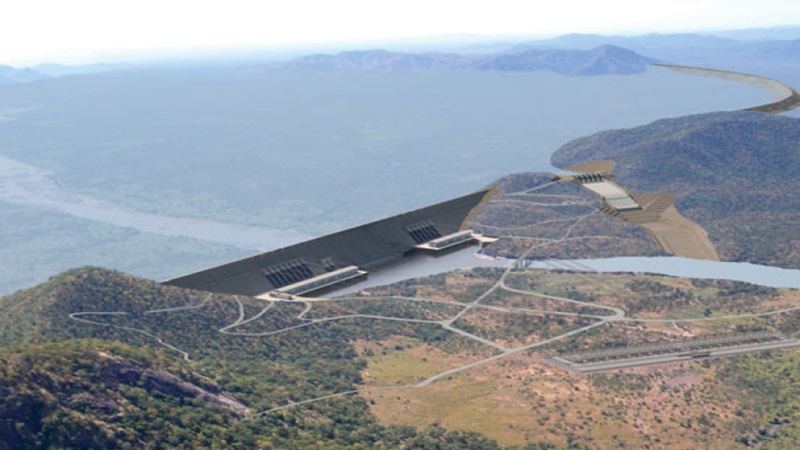
Can the Ethiopian Dam trigger earthquakes in Africa?
Most Read Stories Today
-
Water Scarcity and Artificial Rainfall: The Positive and The Negative Effects of Cloud Seeding, including Health Hazards and Climate Implications.
-
Renewable Energy in Rural Areas: Challenges, Opportunities, and Successful Rural Projects
-
Bridging the Gulf Between Scientific Knowledge and Public Understanding.
-
Are African Plants Getting Ignored Amidst the Climate Change?
-
South Korea's floods: root causes and prevention strategies.
-
Degenerative Impact of Hydrocarbons On The Environment.
-
Climate Change's Grip on Northern Ghana's Agricultural Landscape.
-
Community-Based Adaptation: Land Management and Fire Prevention Techniques in the Heart of Mexico
-
Negative Impacts of Climate Change on Food Security in South Africa
-
Successes and Failures of Paris Agreement
Natural disasters such as earthquakes are frequently labeled as "acts of God," but some studies have quietly questioned if humans may have played a role.
The relationship between human activity and earthquakes is causing growing concern. The construction of major dams is one of the most significant human activities that can cause earthquakes. Dams are designed to hold back large amounts of water, which can put pressure on the earth's crust. When the weight of the water is too much for the land to bear, the ground can shift and cause an earthquake.
A prime example of this occurred in China in 2008, when the researchers have gone public with evidence that stresses from water piled behind the new Zipingpu Dam may have triggered the failure of the nearby fault, a failure that went on to rupture almost 300 kilometers of fault and kill some 80,000 people. In 1967, impoundment behind the Koyna Dam in India triggered the largest known reservoir-triggered quake, a magnitude-6.3 temblor that killed 200 people. (Kerr and Stone, 2009). Can these scenarios occur in Africa?
The Grand Ethiopian Renaissance Dam (GERD) on the Blue Nile, which is located in Ethiopia about 15 kilometres upstream (east) of the Sudanese border and is expected to be completed within the next several years, has been a source of contention from its commencement in 2011. Concerns have been raised in recent years regarding the GERD's potential to create earthquakes in the African region. The Nile River basin, where the GERD is located, is in an active seismic zone.
The weight of the water in the reservoir can cause the underlying rock to shift, potentially leading to an increase in seismic activity. This effect is known as reservoir-induced seismicity (RIS) or induced earthquakes, which can be triggered by the stress changes in the crust due to the water load on the surface and subsurface of the earth. In most cases (RIS) follows the impoundment, large lake-level changes, or filling at a later time above the highest water level achieved until then. Calculations of studies suggest that longer periods water level changes are more likely to cause deeper earthquakes. (Talwani, 1997).
Studies have attributed increased seismic activity in the region by the GERD due to 74 billion cubic meters of water that can be held up in the dam reservoir (Yihdego, et all. 2017), which exerts pressure on the underlying geological structure. Results have revealed recently that the GERD impoundment will cause significant subsurficial stresses, and could possibly trigger seismicity in the region by examining Coulomb stress and hydrologic load centroid movements for several GERD impoundment and operational scenarios (Madson, and Sheng, 2021). However, it is not certain that the GERD's hydrological load changes will actually trigger local seismicity (Madson, and Sheng, 2021) the potential consequences of earthquakes caused by the GERD include damage to infrastructure, loss of life, and disruption to agriculture and irrigation.
References
- Kerr, R. A., & Stone, R. (2009). A human trigger for the great quake of Sichuan? Science, 323(5912), 322-322.https://www.science.org/doi/10.1126/science.323.5912.322
- Madson, A., & Sheng, Y. (2021). Coulomb stress analysis for several filling and operational scenarios at the Grand Ethiopian Renaissance Dam impoundment. Environmental Earth Sciences, 80, 1-17.
- Talwani, P. (1997). On the nature of reservoir-induced seismicity. Pure and applied Geophysics, 150, 473-492.
- Yihdego, Y., Khalil, A., & Salem, H. S. (2017). Nile River’s basin dispute: perspectives of the Grand Ethiopian Renaissance Dam (GERD). Glob. J. Hum. Soc. Sci, 17(4), p.9.



 English
English العربية
العربية Български
Български 简体中文
简体中文 繁體中文
繁體中文 Hrvatski
Hrvatski Čeština
Čeština Dansk
Dansk Nederlands
Nederlands Suomi
Suomi Français
Français Deutsch
Deutsch Ελληνικά
Ελληνικά हिन्दी
हिन्दी Italiano
Italiano 日本語
日本語 한국어
한국어 Norsk bokmål
Norsk bokmål Polski
Polski Português
Português Română
Română Русский
Русский Español
Español Svenska
Svenska Català
Català Filipino
Filipino עִבְרִית
עִבְרִית Bahasa Indonesia
Bahasa Indonesia Latviešu valoda
Latviešu valoda Lietuvių kalba
Lietuvių kalba Српски језик
Српски језик Slovenčina
Slovenčina Slovenščina
Slovenščina Українська
Українська Tiếng Việt
Tiếng Việt Shqip
Shqip Eesti
Eesti Galego
Galego Magyar
Magyar Maltese
Maltese ไทย
ไทย Türkçe
Türkçe فارسی
فارسی Afrikaans
Afrikaans Bahasa Melayu
Bahasa Melayu Kiswahili
Kiswahili Gaeilge
Gaeilge Cymraeg
Cymraeg Беларуская мова
Беларуская мова Íslenska
Íslenska Македонски јазик
Македонски јазик יידיש
יידיש Հայերեն
Հայերեն Azərbaycan dili
Azərbaycan dili Euskara
Euskara ქართული
ქართული Kreyol ayisyen
Kreyol ayisyen اردو
اردو বাংলা
বাংলা Bosanski
Bosanski Cebuano
Cebuano Esperanto
Esperanto ગુજરાતી
ગુજરાતી Harshen Hausa
Harshen Hausa Hmong
Hmong Igbo
Igbo Basa Jawa
Basa Jawa ಕನ್ನಡ
ಕನ್ನಡ ភាសាខ្មែរ
ភាសាខ្មែរ ພາສາລາວ
ພາສາລາວ Latin
Latin Te Reo Māori
Te Reo Māori मराठी
मराठी Монгол
Монгол नेपाली
नेपाली ਪੰਜਾਬੀ
ਪੰਜਾਬੀ Afsoomaali
Afsoomaali தமிழ்
தமிழ் తెలుగు
తెలుగు Yorùbá
Yorùbá Zulu
Zulu ဗမာစာ
ဗမာစာ Chichewa
Chichewa Қазақ тілі
Қазақ тілі Malagasy
Malagasy മലയാളം
മലയാളം සිංහල
සිංහල Sesotho
Sesotho Basa Sunda
Basa Sunda Тоҷикӣ
Тоҷикӣ O‘zbekcha
O‘zbekcha አማርኛ
አማርኛ Corsu
Corsu Ōlelo Hawaiʻi
Ōlelo Hawaiʻi كوردی
كوردی Кыргызча
Кыргызча Lëtzebuergesch
Lëtzebuergesch پښتو
پښتو Samoan
Samoan Gàidhlig
Gàidhlig Shona
Shona سنڌي
سنڌي Frysk
Frysk isiXhosa
isiXhosa
Terms & Conditions
Subscribe
Report
My comments